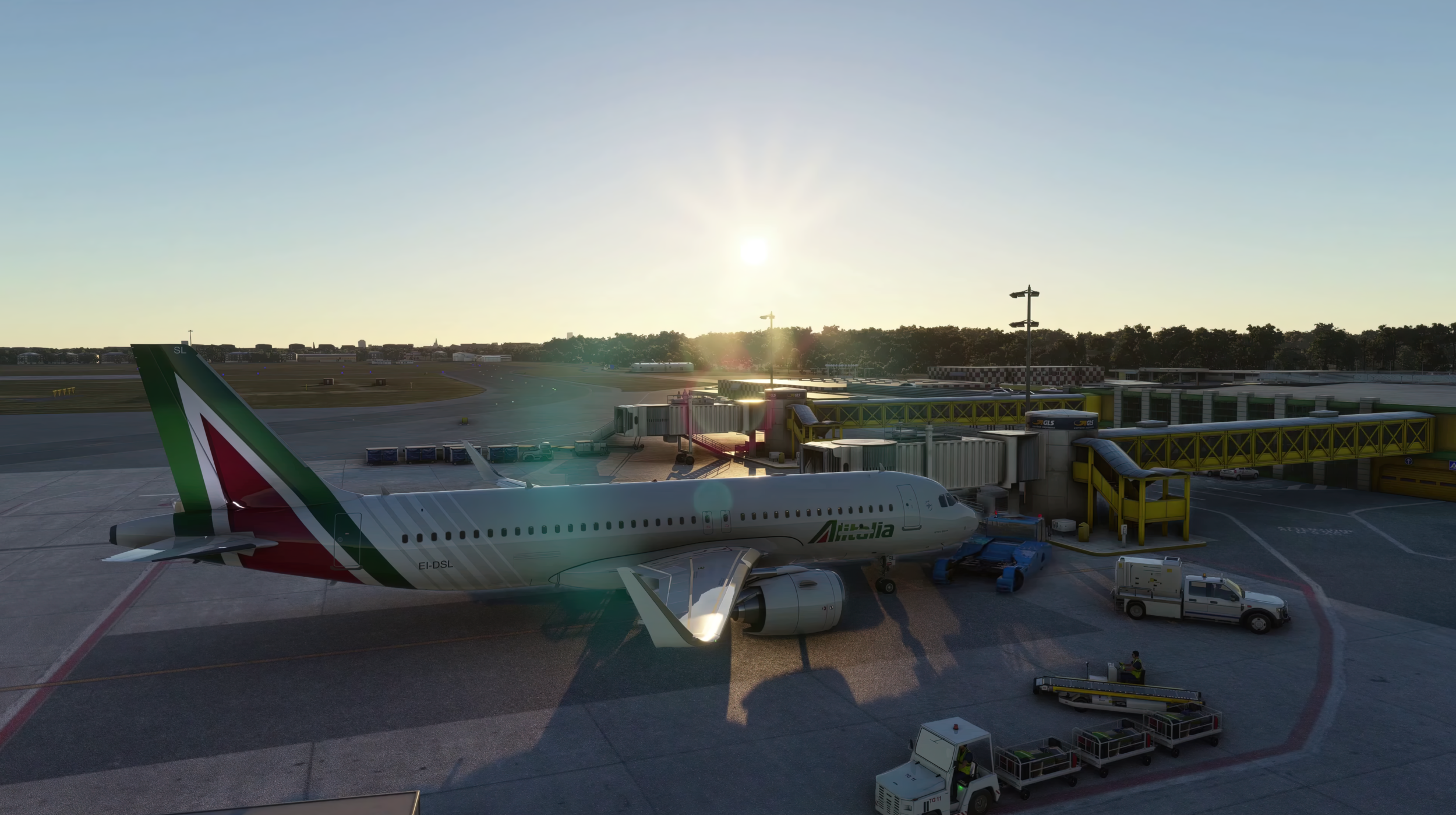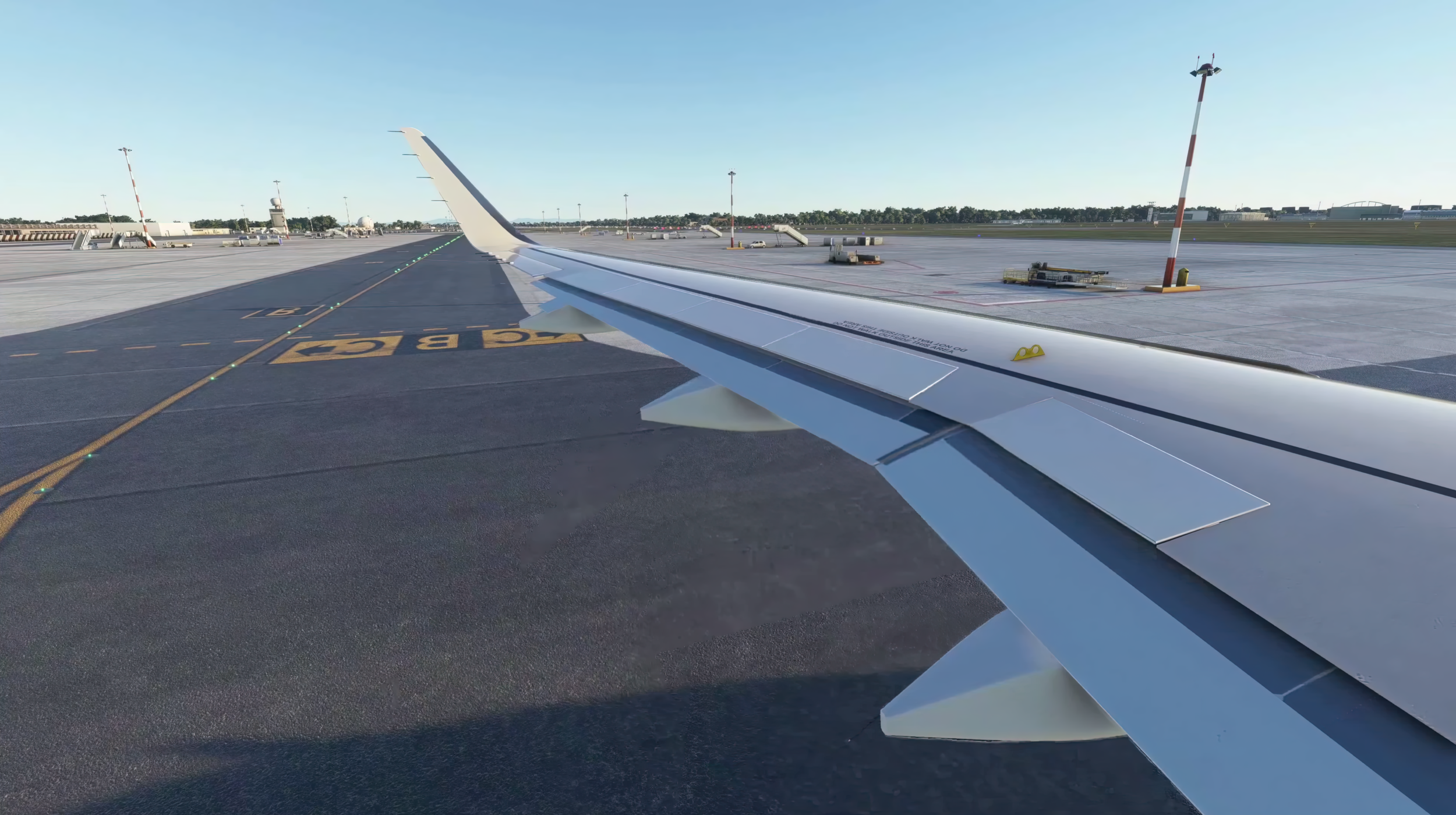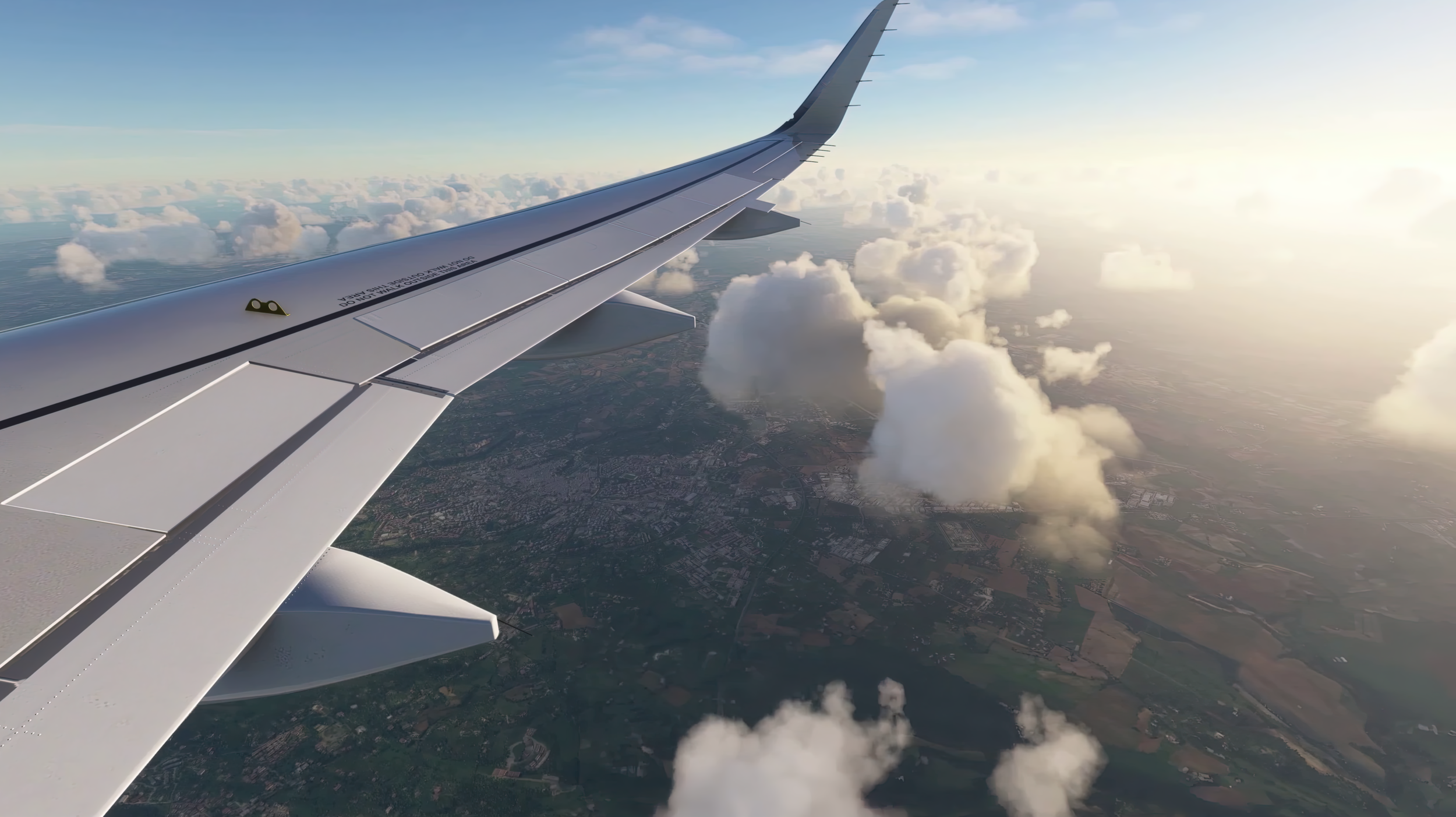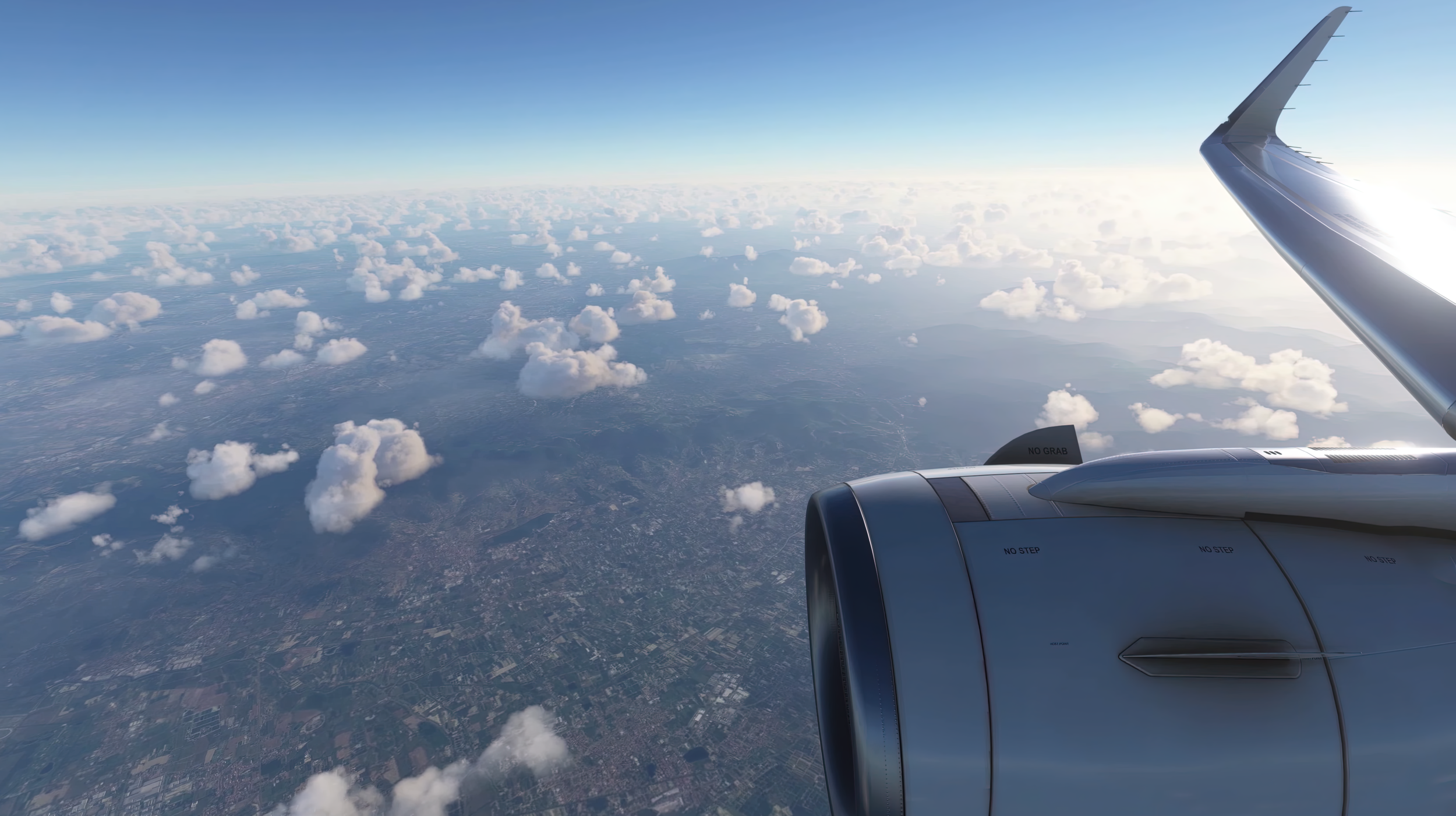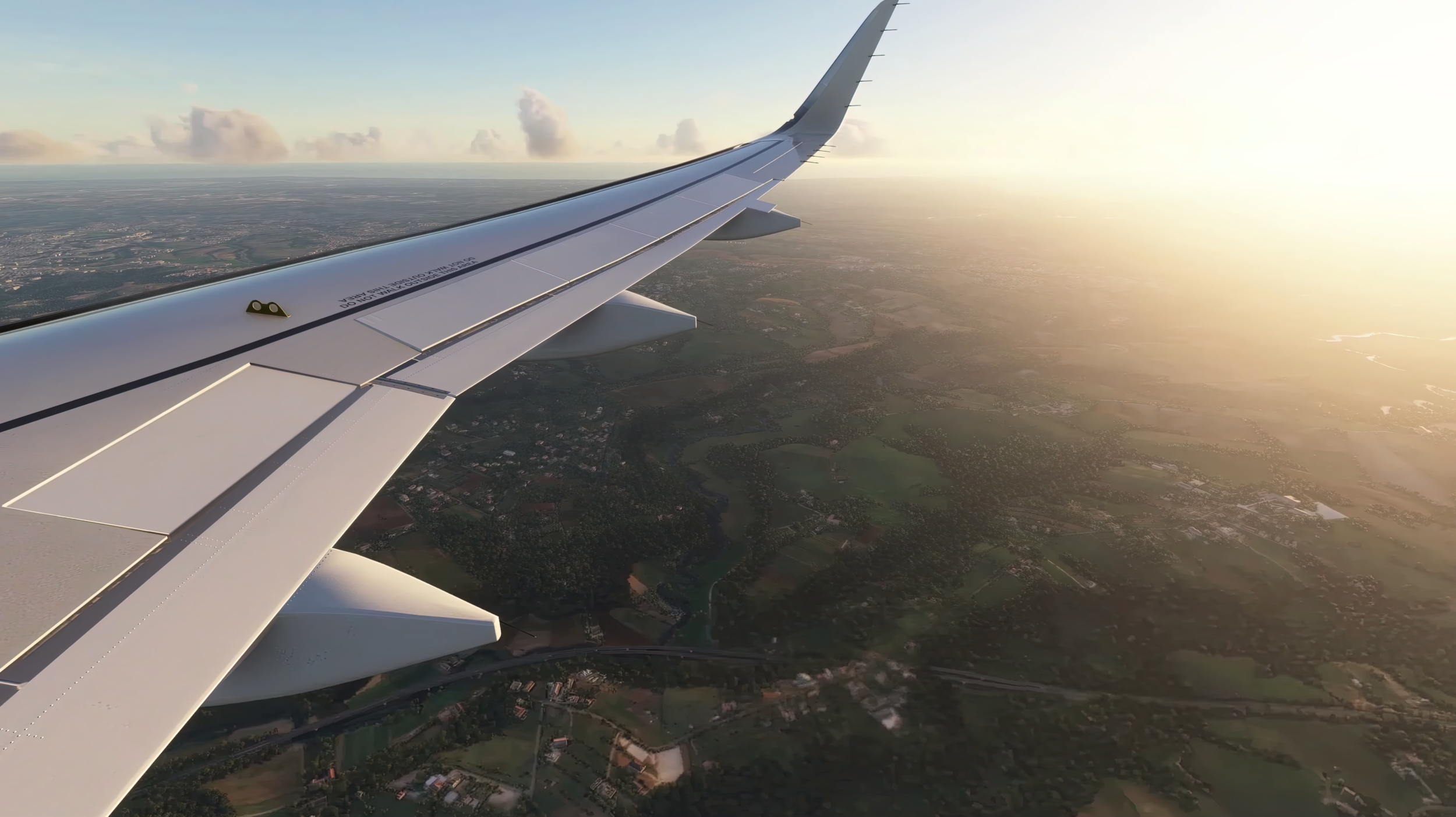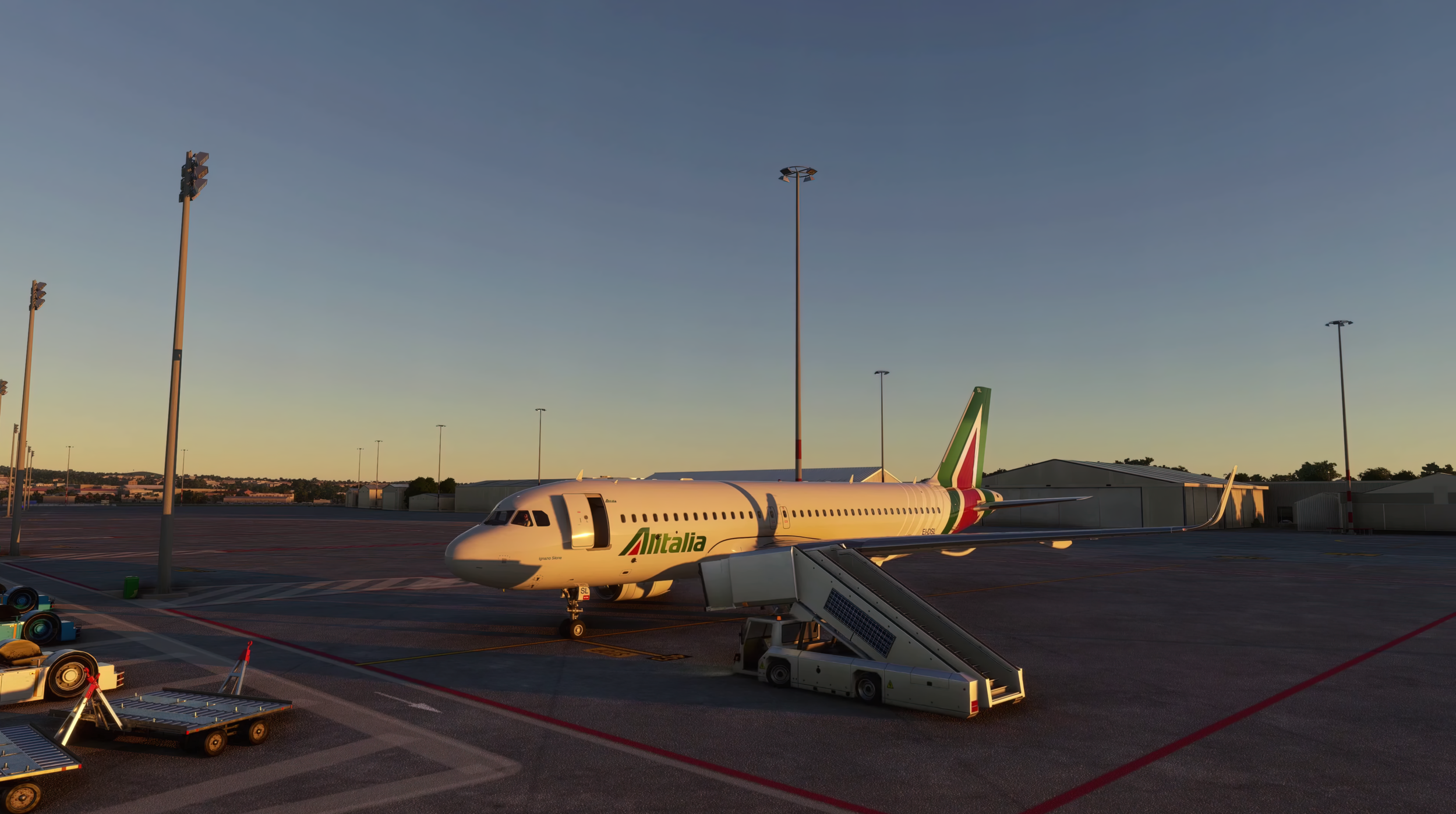FLYIN’ HIGH
digital video (3840 × 2160), color, sound, 59’ 21”, 2021, Italy
Created by The Cool Couple
WORLD PREMIERE
What is the relationship between aviation and computation, technology and the environment? Experience the inner contradictions of the modern age – in which your favorite technological marvel is an agent of environmental destruction – through a simulated flight in the virtual skies. Hosted on Microsoft’s Azure “cloud” infrastructure, this journey illustrates the true consequences of unbridled technological “progress”.
The Cool Couple – often shortened TCC – is an artist duo based in Milan, Italy, established in 2012 by Niccolò Benetton (1986) and Simone Santilli (1987). Their multidisciplinary practice investigates the friction points generated daily by the interaction between people and images. The Cool Couple combines artistic research with teaching: they are lecturers at NABA in Milan and Course Leaders of the BA in Visual Arts at MADE Program.
Matteo Bittanti: How would you describe your latest work?
The Cool Couple: Flyin’ High: making steady progress; being at the high point in one’s career or reaching a high point in historical significance or importance. We’ve made it: human beings have turned the world into a massive land-art project. Carbon dioxide flies high as well. It passed 450 ppm in 2015 and grows steady. One day, there will be such a concentration of CO2 in the atmosphere that we will struggle to think and planes in the sky will find it hard to fly. But, today, we look at an aircraft and we evoke mirages of a previous era of freedom. It seems eons ago when the world we once knew ended, hit by a global plague. It’s a strange situation, the one we are left with. We struggle to grasp its meaning. Now that life and the internet are one thing, we’re caught in a conceptual loop between reality and its representations, not so different from Joseph Kosuth’s three chairs. We look for the causes but all we can find is paranoia. Aviation impacts on the environment. The Internet does so even more. NFTs generate as much carbon dioxide as a jetliner flying for one hour. And the environment kicks back. Turbulence fills our skies and rising temperature slows the speed of data exchange. Flyin’ High tries to reflect on this condition. It is a one-hour flight from Milan to Rome onboard a digital plane, perfectly simulated inside Microsoft Flight Simulator AI processed replica of earth. Flyin’ High is also an NFT. Buying it, theoretically, corresponds to boarding the plane for real.
Matteo Bittanti: As soon as the “crisis” switched from a one-time event into our default mode, the so-called open worlds of video games became the most popular destination for a growing army of virtual tourists. When the Real turns destabilizing, the Imaginary comes to the rescue. Many look for solace in the perfect skies of Skyrim, some swim in the plastic-free waters of San Andreas, others explore the colorful islands of Animal Crossing while virtually consuming all sorts of stuff. All enjoy Covid-free screen-based social interaction. Were you too sheltering in virtual places when the pandemic hit? What is your relationship to video games, before and after social distancing gave way to social media oversharing?
The Cool Couple: When the lockdown kicked in and we witnessed the mass on-screen migration, we were reminded of the words of economist Edward Castronova in the prescient Exodus to the Virtual World: “The exodus of these people from the real world, from our normal daily life, will create a change in social climate that makes global warming look like a tempest in a teacup”. Back then, this passage sounded hyperbolic and catastrophic. However, last year, we felt that something that had been in front of us for years, was finally emerging. Our feeling was that the lockdown both accelerated and compressed processes that were already happening. It was some kind of time traveling. Now, we live in a refashioned world and, despite our claims for outdoor activities, freedom and so on, we are more inclined to relive the virtual experiences we’ve grown used to in the last months. On our side, however, we haven’t bathed in the virtual world as much as we wanted. Partially because we were lucky enough to be busy with work, and, secondly, because we are modest players. Simone is the one who most frequently plays online. We’ve been playing games for most of our lives. Video games were central to our teenage years. We basically grew up in GTA. Then, we sort of distanced ourselves from the digital playgrounds, but we always kept abreast. It goes without saying that the influence of video games on society cannot be underestimated.
Matteo Bittanti: One thing that struck me as I was watching Flyin’ High is the realization that Alitalia is still around. That’s truly astonishing. Shocking, even. My experiences with this company have been horrific, survival horror style. For some reason, I thought they went bankrupt a decade ago. How is it possible that Alitalia is still in business? Has reality become a video game in which the main character cannot possibly die? What happened to permadeath?
The Cool Couple: Alitalia died and then respawned. Many times. Clicking “X” furiously to respawn faster. It’s a kind of fossil of another era, that – for reasons that can’t be explained but would be nice to investigate further – is stuck to the first decade of the aughts. Alitalia is the quick frame from an episode of the Sopranos when Tony travels to Italy. For a few seconds you see stock footage of an Alitalia jetliner landing. Blurry, slightly pixelated 4:3 footage from the end of Nineties, beginning of the aughts. That’s it. Is reality looking more and more like a video game because the video game terminology has become so common? Is permadeath going to be substituted by permafrost (once the latter will evaporate from Earth and be reduced to a concept), i.e. the condemnation to relive the same game session, the impossibility of quitting the game?
Matteo Bittanti: I love the idea that both permadeath and permafrost will soon become extinct, like so many other things on this planet. I tend to react to these dramatic disappearances with a mix of horror and inertia, which should be mutually exclusive, but somehow coexist peacefully. Similarly, I found Flyin’ High both thrilling and terribly boring, which should not be taken as an insult, in the sense that boredom is an extremely rewarding feeling, not to mention aesthetically rich, and I’m sure Sianne Ngai will soon write an entire book on the topic. Besides, Flyin’ High focuses on the kind of boredom that can suddenly turn into pure terror. The sense that we are witnessing “the calm before the storm” – as a QAnon believer would say with gravitas – permeates the entire video. In this case, the storm is literal. You address the phenomenon of clean-air turbulence which shatters the false sense of security that airline companies try so hard to concoct through massive doses of emotional labor, reassuring smiles, and overpriced alcohol beverages. As James Bridle writes in his book New Dark Age, “Clear-air turbulence is so named because it comes literally out of the blue. It occurs when bodies of air moving at wildly different speeds meet: as the winds shear against each other, vortices and chaotic movements are produced. While much studied, particularly in the high troposphere where long-haul aircraft operate, it remains almost impossible to detect or to predict. (...) And incidences of clear-air turbulence are increasing every year. (...) And incidences of clear-air turbulence are increasing every year. (...) The authors of the turbulence study emphasise once again the nature of feedback in this rise in turbulence: ‘Aviation is partly responsible for changing the climate but our findings show for the first time how climate change could affect aviation’. (...) The future will be bumpy, and we are losing our ability even to predict the shocks.” I find it remarkable that we entertain ourselves with ever sophisticated simulations like Microsoft Flight Simulator and yet we are unable to predict what’s going to happen five minutes from now. Is art, therefore, the only reliable radar we have, paraphrasing Marshall McLuhan? Is the future going to be bumpy? Is there any future left or has it been slowly erased, as Bifo suggests?
The Cool Couple: Flyin’ High is extremely boring. Thank you for saying that. We miss flying, but, let’s be honest. Most of the flights we take are boring, annoying, there are babies crying, people messing up, someone praying right next to you, the girl in front of you combing her hair neurotically and covering the page of the book you’re desperately trying to read. There’s constant chatting, sudden announcements. Low cost flights seem to be specifically designed to exacerbate an already distressing situation. The feeling we’ve had after the COVID-19 break is that airline companies had worsened the quality of their services to make up from the financial gap of a year-long lockdown. And you could feel it. It has never been clearer how useless and irrelevant you are to these companies. You’re just a combination of a name, surname and seat number that exists in the time-space continuum for only a few hours. It is the closest experience to a free-to-play game with in-game purchases that we could find IRL. With a few exceptions, many games or apps based on a freemium model, totally suck. That’s exactly what you get with a low cost flight. Nonetheless, you can pay to improve your experience, which will still run on a cheap formula, but you will gain some benefits, or at least the pretension of an improvement. So, Flyin’ High tried to collect some of these elements and assemble them. In Flyin’ High we’re given the POV of a silent passenger, who never speaks but is condemned to listen to whatever happens around him. Boredom is the thread connecting all the events taking place during the trip. Everything is boring, but, as you correctly noticed, everything is horrible at the same time. Voices are flat, the chatter is meaningless, every interaction is transactional. This is already catastrophic. In this horror movie, external elements like turbulence subvert the “order of things”, possibly offering some sort of salvation to the passengers. However, the pilot manages to keep everyone alive and the flight reaches its final destination. Perhaps there’s more to be said or perhaps we’ve already said too much. It’s like the world we live in: everyone is struggling to understand what often can’t be understood. In New Dark Age, James Bridle also says that we’ve surrounded ourselves with images that show us everything, only to discover that they can’t explain anything. In this context art can be the most flexible tool we have to try to come to terms with a highly unpredictable context. Which, maybe, is a way to convince ourselves that the future exists. Bifo, as Mark Fisher, said that the future is gone. It has collapsed into the present. However, isn’t it just one version of the future? The planned one, the progressive one, the line of historical development, the arrow of progress? The day when artificial intelligence will be able to exhaust all possible outcomes of all possible actions and events in the world is still far. In the meanwhile, the world is getting messier day by day. And here comes another future. A tomorrow characterised by sheer unpredictability. At least it will leave us room for imagination, visions, nightmares, and action.
Matteo Bittanti: In 1995, J.G. Ballard famously stated: “It seems to me that what most of us have to fear for the future is not that something terrible is going to happen, but rather that nothing is going to happen… ... I could sum up the future in one word, and that word is boring. The future is going to be boring.” In 2021, this verdict sounds a bit off, doesn’t it? The past few years have been anything but boring… Perhaps we’re facing a new cognitive crisis. In another passage of New Dark Age, James Bridle mentions the effects of carbon dioxide on human cognition, which are explicitly referenced in Flyin’ High as well. Specifically, he writes that “At 1,000 ppm (of CO2), human cognitive ability drops by 21 per cent. At higher atmospheric concentrations, CO2 stops us from thinking clearly. Outdoor CO2 already reaches 500 ppm regularly in industrial cities: indoors, in poorly ventilated homes, schools, and workplaces, it can regularly exceed 1,000 ppm – substantial numbers of schools in California and Texas measured in 2012 breached 2,000 ppm. Carbon dioxide clouds the mind: it directly degrades our ability to think clearly, and we are walling it into our places of education and pumping it into the atmosphere. The crisis of global warming is a crisis of the mind, a crisis of thought, a crisis in our ability to think another way to be. Soon, we shall not be able to think at all.” Looks like we’re already there. I mean, we have already reached “peak stupidity” and yet we are unable to recognize the gravity of the situation. The proliferation of the most absurd conspiracy theories and the sheer idiocy of our lifestyles prove that rationality does not drive our behavior. If the apocalypse is inevitable, what can an artist do?
The Cool Couple: In our opinion, the real question is: When will the apocalypse come? Signs of it are already scattered everywhere. Perhaps it’s already happened and we didn’t notice. That would be a pity. Like missing the only event worth witnessing. So, it’s really hard to say what artists can do after the end of times. The more we go on the more we’re unsure about a Hollywood-style ending, with fireworks, CGI, aliens, giant robots, meteors and so on. As the Falmin’ Groovies were singing in Slow Death: “I called the doctor/in the morning/I had a fever/I was a warning/She said there’s nothing I can prescribe/to keep your raunchy bag of bones alive/I got some money left for one more shot/she said God bless you/I said Thank you/It’s a slow, slow death.” Earth is warming up, sweating, flooding whole regions and killing thousands of people, it’s shivering, like in Haiti. It’s silly to expect a spectacular finale. It’s a common flu, happening on the scale of deep time. From our perspective, it’s an inhuman stretch of time. When we’ll get used to it, there won’t be artists working after the apocalypse but during it. Let’s normalize the apocalypse!
Matteo Bittanti: Perhaps Ballard was right after all. The apocalypse is boring. It is part of our “regular broadcasting” for a while. I agree with the French collapsologists that there’s not going to be an official, spectacular End of the world, but rather several anticlimactic ends. In a sense, we experience the end of a world every single day. But we get accustomed to the new normal so quickly that we barely notice. We all suffer from shifting baseline syndrome. At least, I do. But let’s get back to Flyin’ High before it’s too late. The most remarkable aspect of Microsoft Flight Simulator is its cloud generator (“What stunning landscapes! The clouds seem virtual”, says one of the passengers). As you know, cloud is a loaded term: heavily weaponized by marketing imperatives and exploited by media gurus and other mercenaries. As Bridle writes in the introduction to New Dark Age, “the cloud is the central metaphor of the internet”, but far from being that elusive, immaterial ether that corporations glorify, “the cloud shapes itself to geographies of power and influence, and it serves to reinforce them. The cloud is a power relationship, and most people are not on top of it.” Microsoft, like Amazon, manages (read: owns) a vast segment of the internet, thanks to its Azure infrastructure. What does it mean that the entirety of today’s culturalscape – e.g. images, videos, text, art – is owned by a handful of American companies? This is rather unprecedented in human history…
The Cool Couple: Honestly? This is a good question. Especially with China growing so fast. But there’s a lot going on on too many layers to be easily grasped in one answer. Geopolitics is one thing, but the infrastructure of the internet is local, global, and tangible; it inhabits all matter statuses: gas, liquid, solid. There’s so much that can interfere with it. So much that can knock it down. So many users from so many places. And competition. Perhaps it won’t be a matter of America versus the rest of the world, but of private entities with a power greater than nation states.
Matteo Bittanti: That’s indeed the world described by cyberpunk novelists in the 1980s. Let’s focus on a different kind of storytelling: one of the biggest trends in corporate communication today is “greenwashing”, which is not new per se, but has reached new heights (or, rather, lows) with the emphasis on empty mantras as “sustainability”, “circular economy”, “offsetting the carbon footprint” and so on. I mean, Paola Antonelli’s “conscious raising” exhibition Broken Nature at Triennale Milano was sponsored by ENI, Italy’s biggest polluter, and yet nobody – nobody – mentioned the blatant hypocrisy of such endeavor. The idea of “fossil fuel divestment”, the theme of Mel Evans’s excellent Artwash: Big Oil and the Arts (2015) is taboo in the Belpaese, which lags behind the most advanced countries when it comes to environmental awareness. Speaking of which… Is seaweed-based sushi any good? I may try the “Anthropocene menu” the next time I find myself on an Alitalia flight…
The Cool Couple: Sorry, we didn’t try it. It was mentioned at the end of Seaspiracy, a Netflix documentary that caused a stir on social media a few months ago. In the closing scenes, the director meets the founder of a sushi restaurant offering a perfect replica of traditional sushi, with one key difference: it’s made of algae instead of fish. It was a commercial inside the documentary, a blatant case of product placement, a crass operation that — in a different context — could have had some merit, like a caricature of some sorts. But not in this case. Like most Netflix productions, Seaspiracy was so bloated and ultimately meaningless. Actually, it could have been a Disney production. So we appropriated the algae-based sushi for our special in-flight menu. The artworld faces huge problems when it tries to tackle environmental themes. It’s a model that sadly is often enacted and goes far more than that. Actually, many environmental and conservation organizations worldwide can be classified as promoters of a “mainstream conservation” strategy, which is entirely capitalistic in its nature. As a result they often partner with the most destructive companies on the planet, the latter happy “to clean” their image.
Matteo Bittanti: The internet was supposed to save the planet, or so we were told by Al Gore and friends, but has now become one of the key catalysts of its destruction, so “suggesting that the future of the world is the future of the internet” is not only a clever reference to Bridle’s definition of computational logic and Morozov’s “solutionism”, but also a warning that, if such scenario would indeed pan out, our future is going to be cesspool and wearing floaties is not going to save us. Luckily, “the most famous influencer cats on Insta” must have all the solutions to today’s problems, otherwise they would not be famous on Insta in the first place, right?
The Cool Couple: Ahah, they are on their way to take over the planet.
Matteo Bittanti: A recurrent image in Flyin’ High is the view from the plane’s window showing the visual distortion produced by the carbon dioxide relentlessly emitted by the plane’s engine. Considering that we are watching a video shot with/in Microsoft Flight Simulator, such an image is evocative of the dramatic impact of video games on the environment. As the virtual plane safely lands, we are informed that “the flight produced approximately 90 grams of carbon dioxide, the equivalent of watching 10,000 hours of YouTube videos” – how is that for a “final score”? –, which, again, resonates with Bridle’s New Dark Age: “Computation is both a victim of and a contributor to climate change. As of 2015, the world’s data centres, where exabytes of digital information are stored and processed, consumed about 3 percent of the world’s electricity – and accounted for 2 per cent of total global emissions. This is about the same carbon footprint as the airline industry.” Do you believe that if people were better informed about the consequences of their daily actions – including the carbon footprint of their video game sessions – they would change their behavior? In other words, our inertia in regard to climate change is mostly caused by ignorance (“I don’t know”) or sheer indifference (“I know and I don’t give a flyin’ fuck”)?
The Cool Couple: Let us address the first part of your question: truth be told, information is provided. Not often and not clearly as it should, granted, but it’s usually available. It has been available for years. When it was still commonplace to purchase paper train tickets, (Italy’s main railway company) Trenitalia added a handy infographic to the back of the ticket showing how much CO2 you, the passenger, produced by using a train instead of a car or airplane. That information was supposed to make you feel good, because your impact on the environment was less taxing… Moreover, many ATMs invite you not to print the receipt to be more “environmentally friendly”…
Matteo Bittanti: That’s right. I remember that. By the way, as you probably remember, a famous chain of car dealership in Italy responded with an ad campaign based on the mantra “Più auto meno treni” (“More cars, less trains”), perhaps the most demented message that one could promote even for an “environmentally challenged” country like Italy, but then again, the Belpaese is not exactly known for subtle or clever advertising either. These idiots plastered cities with billboards inviting people to pollute as much as possible which, as you can imagine, resonated well with the local petrolheads, those who drive a diesel SUV to safely drive to the organic grocery store and back…
The Cool Couple: This is another side of the same coin we dealt with in the previous question: capitalism has already passed its green version and it has entered a pure abstract relation to nature through financialization. The so-called “developed countries” can purchase patches of forests in the Third World to compensate for their emissions. Those in power are not interested in fixing anything if it’s not profitable. Now that we’re more sensitive to environmental issues, communication has co-opted environmental-related slogans. And here we go to the alternative you offered in the second part of the question: although someone might have used ignorance (the “I didn’t know” excuse), today that the information is abundant — possibly overwhelming — the only possible reaction is indifference (“So what?”). Even when we do care, however, we act in contradictory ways. Timothy Morton discusses this conundrum in Hyperobjects. He calls it the “toilet flush effect”. We go to the toilet, we do our business, we flush. That’s it. We don’t spend hours thinking about the journey that our waste will embark on, all the way down the sewage to the ocean where they’ll join the shit of seven billion human beings all over the world, and other things, from plastics to fertilizers. We don’t think about that when we go on vacation, we dive into the water and we piss in the sea. It’s such a good feeling, isn’t it?
Matteo Bittanti: It is.
The Cool Couple: But we rarely consider that someone else in the surroundings might be doing the same. The real issue we face is this inability to connect the dots, or better, to keep them connected.
Matteo Bittanti: I totally agree: we are marinating in shit. Such inability to see the big picture, the context, the interrelation of all things is not incidental. Neoliberal universities — read: 95% of higher education as we know it — are built on this very model: We will teach how to maximize profits while dismissing the “externalities” as irrelevant. As long as the ROI is fine, don’t you worry ‘bout a thing! Keep your eyes on the prize… Same goes with AI and automation, which are currently being sold to students as the next great revolution that will change the world… You tackle this theme in Flyin’ High as well. In his 2015 book The Glass Cage: Where Automation is Taking Us, Nicholas Carr – who correctly predicted that the internet was “making us stupid” more than a decade ago – argues that unbridled technological innovation poses several risks. Specifically, he argued that automation produces deskilling, dehumanizing, and even life-threatening outcomes on a mass scale. Incidentally, his account of the fatal crash of a 2009 Continental Connection/Colgan Air flight from Newark to Buffalo is uncannily reminiscent of the recent spate of software-related issues that caused several Boeing planes to crash all over the world in 2019. The invention of the plane, argued Paul Virilio, is the simultaneous invention of the plane crash. So what does the invention of automation produce, socially and culturally?
The Cool Couple: Automation brings many challenges to society. It is not easy to predict what will happen once automation becomes pervasive, because it might introduce groundbreaking changes to the way we live. Automation could remove our sense of purpose as human beings in the short, mid and long term. Let’s make a comparison, so that such a claim may be easier to understand: after they retire many people suffer from a quick cognitive and physical decline. Their health is still good, they don’t suffer from any disease. And yet, they rapidly decay. Yesterday they were active, today they are not. After this change, they’ll keep going in this condition of senescence for decades. Why? Often this same thing happens to individuals who suffer accidents that prevent them from performing routine tasks. It’s a form of depression caused by a sudden feeling of uselessness. Goal setting is not easy. Usually, goals are the byproduct of the environment we live in: we struggle to survive, there’s a deadline approaching, there are children to raise, a vacation to plan. Work is the counterpart to leisure. A life of otium isn’t easy. Otium was a condition sought by many ancient literates who could focus on research. They had a lifelong goal to achieve. The same applies to artists, at least to some. But people are different and even a passion requires self discipline and hard work. When everything is automated and we won’t have to worry about anything, are we sure we won’t experience a breakdown? Sadly, we may become like wild animals stuck in a cage in some zoo, who roam around dumbly, staring at visitors with their empty gaze. Their vital instincts have been erased. If we can react positively to total automation, we will be fine. Otherwise, let’s hope we will have the “empathy boxes” that Philip K. Dick describes in Do Androids Dream of Electric Sheep?
Matteo Bittanti: “The image of wealth is a plane flying around the world” we are told by the PA as the virtual plane safely lands in Rome and travelers clap their hands enthusiastically. Does that image need an update, considering that today nothing says bling bling more than a billionaire wearing a cowboy hat aboard his phallic rocket? Should we all start peeing in plastic bottles to buy a one way ticket to Mars, as the planet becomes completely inhabitable?
The Cool Couple: Yes, Flyin High is definitely an artwork of its times, circa mid-2021. We should add it to the caption. We will be required to pee in plastic bottles and to sell them to the closest store when our urine will be used to produce rocket fuel. We’ll see people queing to deliver the bottles to the collection point and be paid an insignificant amount of money. A pee-to-earn gig thing.
Matteo Bittanti: Ammonia as fuel crowdsourced via The Mechanical Turk! What’s not to love about this gig? Last question: Chemtrail or contrails?
The Cool Couple: Contrails are for people without imagination.
FLYIN’ HIGH
digital video (3840 × 2160), color, sound, 59’ 21”, 2021 (Italy)
Created by The Cool Couple, 2021
Courtesy of The Cool Couple, 2021

